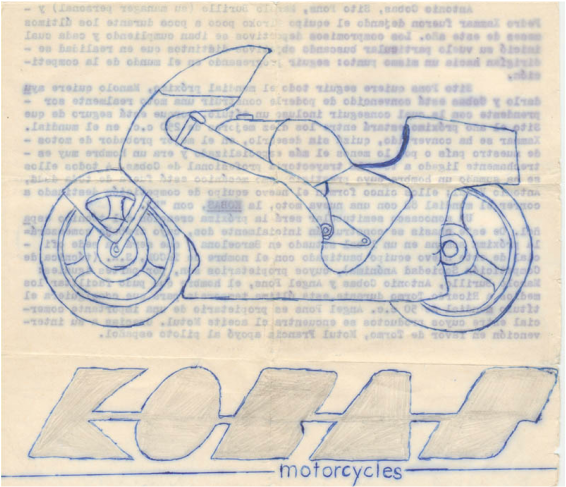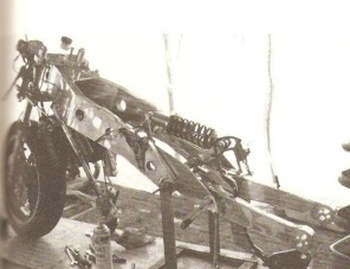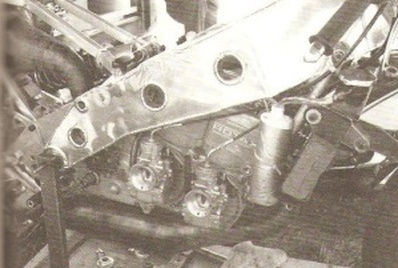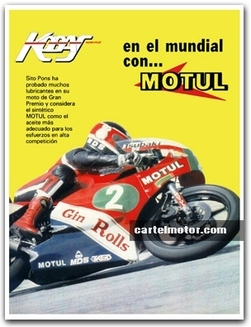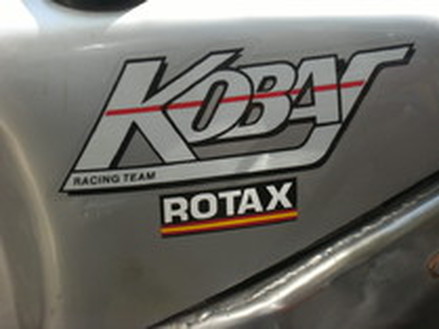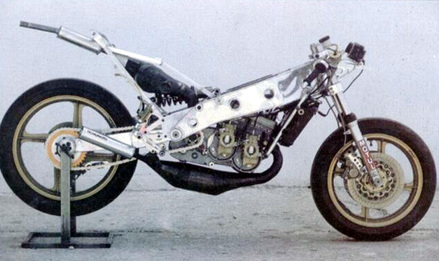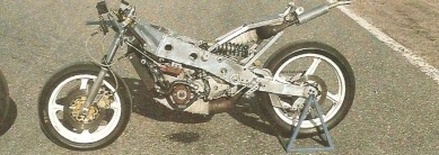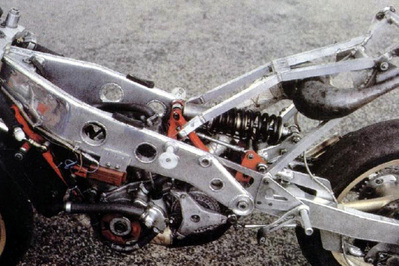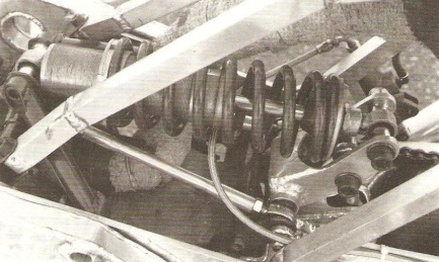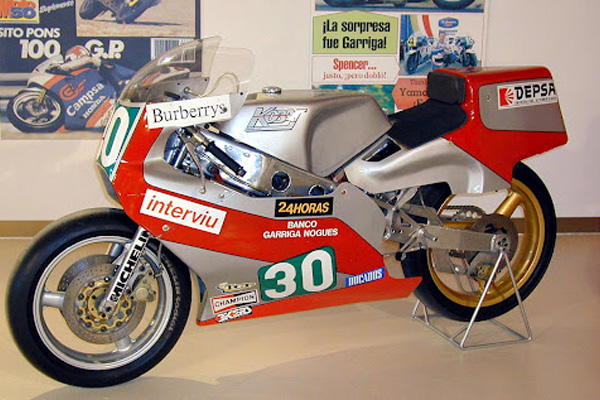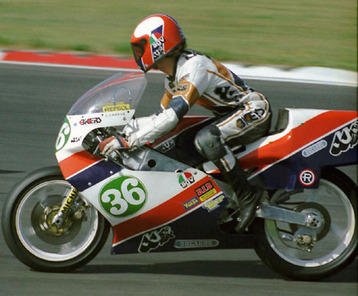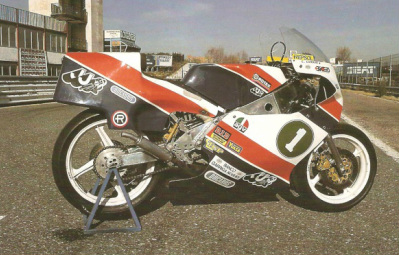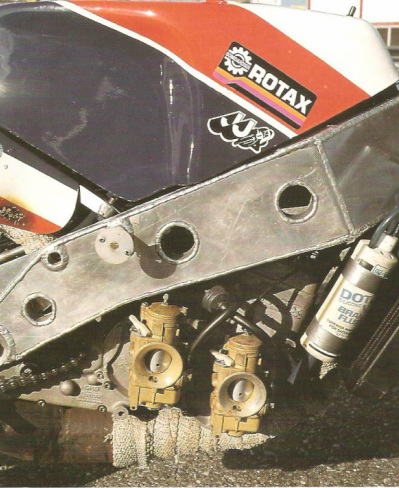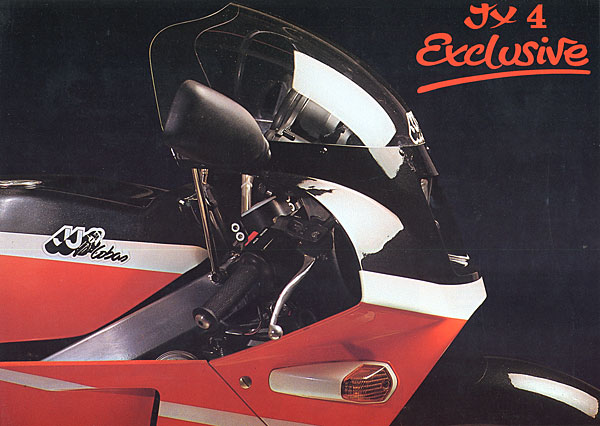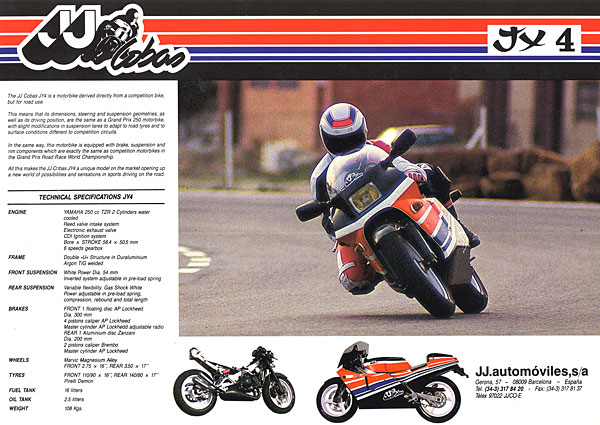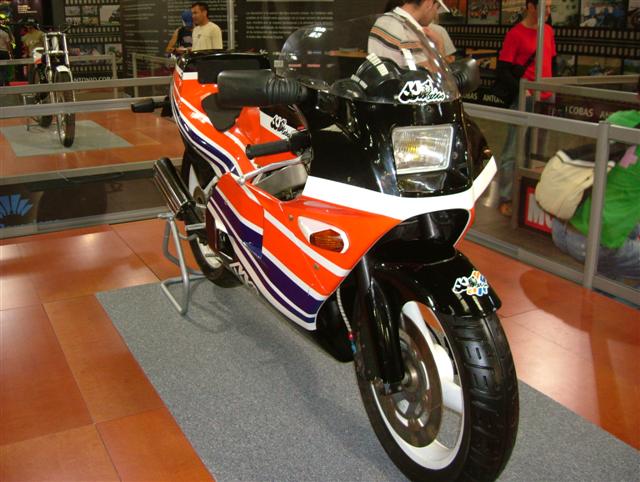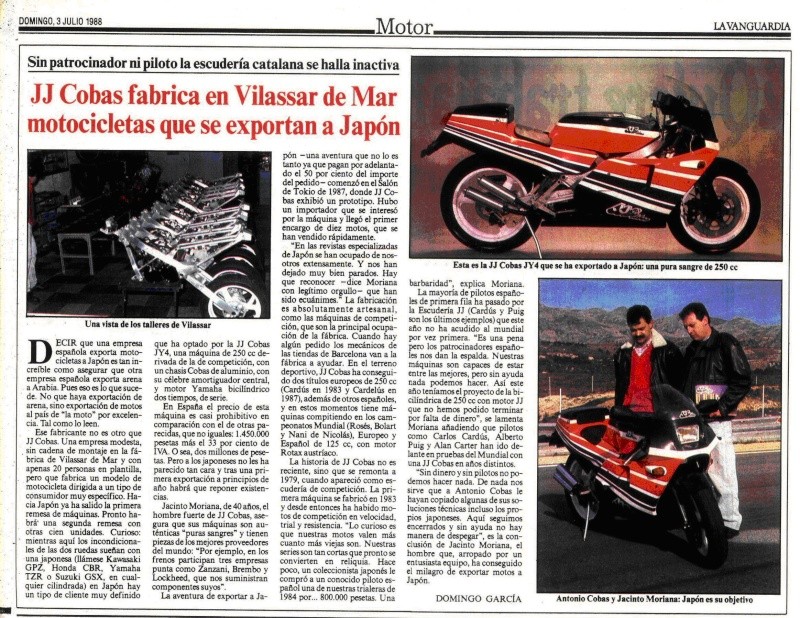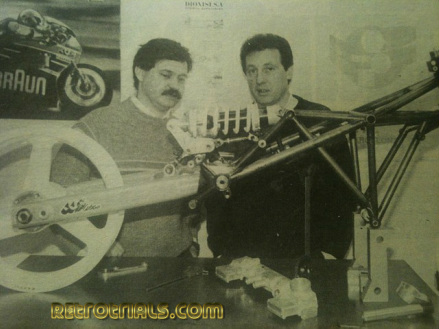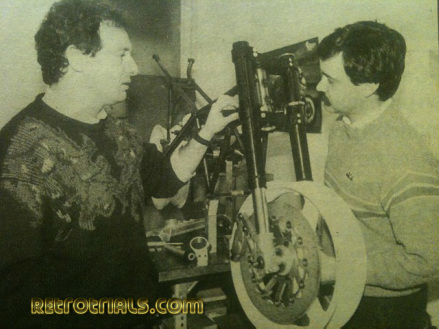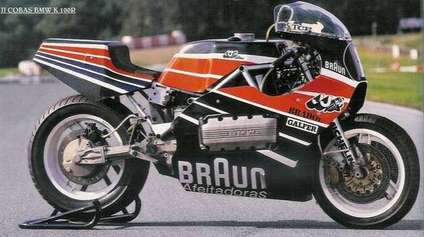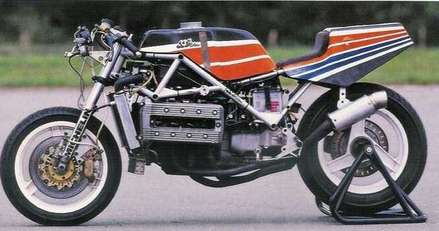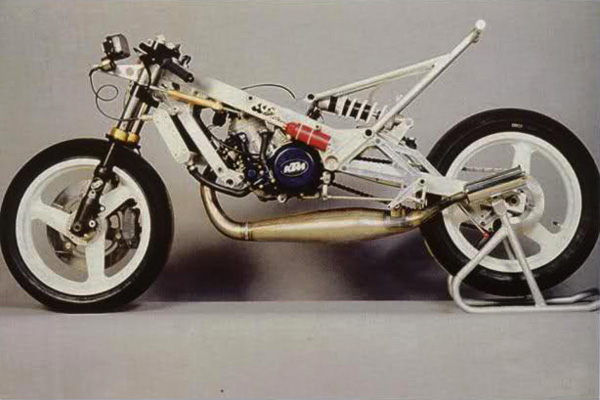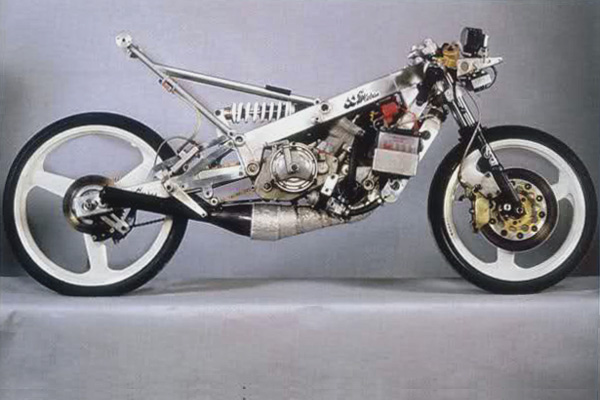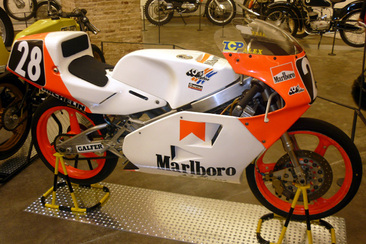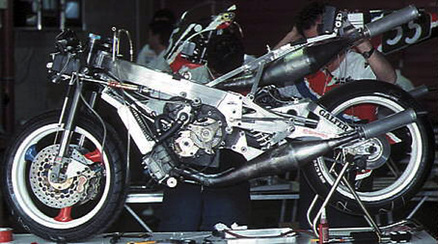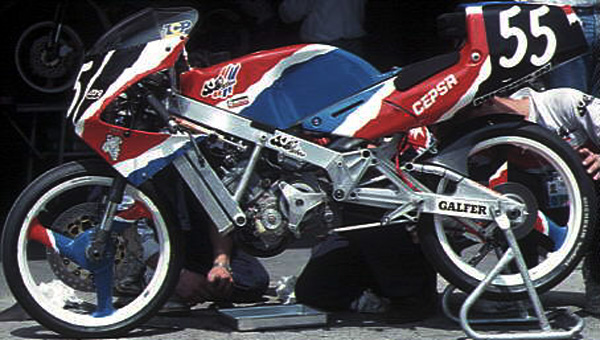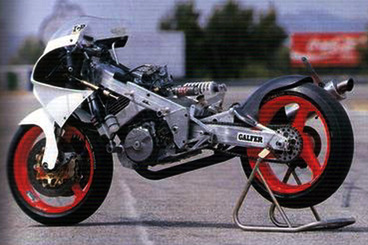page 2 - jj cobos the man behind the machine
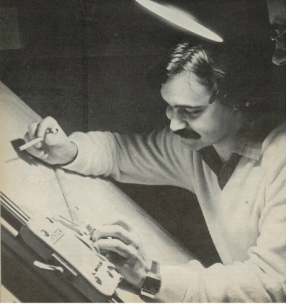
In 1982 Antonio created the Kobas brand of motorcycles designing his own chassis powered by the popular Rotax engines. They had great success with riders Sito Pons and Carlos Cardus.
His chassis designs rocked the motorcycle world
The trademark Kobas rear suspension gives full rising rate and offers compact installation at the expense of raising the centre of gravity
|
Cobos's contributions
1 - Positioning the rider over the front wheel increasing front tyre grip to rear at a rate of 55/45 when at the time the supposed ideal set up was 50/50. 2 - Compacted the bikes mass and juxtaposed the centre of mass and centre of gravity to reduce the polar movement and improve handling. 3 - Raised the centre of gravity to improve weight transference for improved braking and extra traction exiting a corner and increased rear suspension travel. 4 - Rising rate linkage. All these featured became common place on Gp race bikesbut it was Cobas in the Kobas who first pointed the way. A milestone in modern GP design. |
J j cobos was created in 1983
In 1983, Cobas formed a new motorcycle company named JJ Cobas. Pons would ride a JJ Cobas motorcycle in the 1984 250cc world championship, garnering their first Grand Prix victory with a win at the 1984 Spanish Grand Prix and, ended the season in fourth place in the championship.Even greater success came in 1989 when a Cobas-designed motorcycle ridden by Alex Criville won the 125cc world championship.
In 1988 JJ Cobos manufactured a very small number of these road bikes JY4 for sale to the public. The cost was high at 1,450,000 picetas and the project was stopped after 2 batches. Most of the bikes were exported to Japan.
In 1988 JJ Cobos manufactured a very small number of these road bikes JY4 for sale to the public. The cost was high at 1,450,000 picetas and the project was stopped after 2 batches. Most of the bikes were exported to Japan.
When Pons moved to the Honda factory racing team in 1986, Cobas followed and served as Pons' crew chief. Pons retired as a competitor in 1991 and created the Pons Racing team, naming Cobas as Technical Director. In this role, he prepared motorcycles ridden to Grand Prix victories by Alberto Puig and Carlos Checa. He also rejoined Crivillé during his world championship winning year in 1999. He also worked closely with Max Biaggi. When he fell ill last year and could not travel to the races, he still consulted with the team via e-mail.
Cobos also worked with the Camel Grand Prix team
Cobos also worked with the Camel Grand Prix team
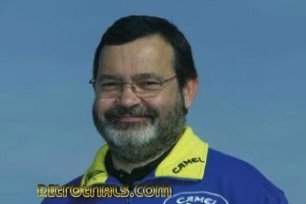
Cobas died in 2004 at the age of 52.
You are very unlikely to come across any of Cobos's creatings. There were never any 'customer' Kobas/Cobas frames made they were all for works riders, what didn't get crashed got sold and crashed by someone else. There are only a few originals left one in the US and 10 in Europe(mostly in Spain). There was 5 copies made of the US bike and 3 of those made it to Australia.
Camel Pons owner Sito Pons said this about Cobas: "He was indeed a precursor, one who opened up the way for research and development, especially in the field of frame design, that others then followed."
Pons - "A top-level engineer, always perfectly aware of the available technology and always knowing exactly what to do to enter the future,"
"He was always two or three steps ahead of the others."
You are very unlikely to come across any of Cobos's creatings. There were never any 'customer' Kobas/Cobas frames made they were all for works riders, what didn't get crashed got sold and crashed by someone else. There are only a few originals left one in the US and 10 in Europe(mostly in Spain). There was 5 copies made of the US bike and 3 of those made it to Australia.
Camel Pons owner Sito Pons said this about Cobas: "He was indeed a precursor, one who opened up the way for research and development, especially in the field of frame design, that others then followed."
Pons - "A top-level engineer, always perfectly aware of the available technology and always knowing exactly what to do to enter the future,"
"He was always two or three steps ahead of the others."

